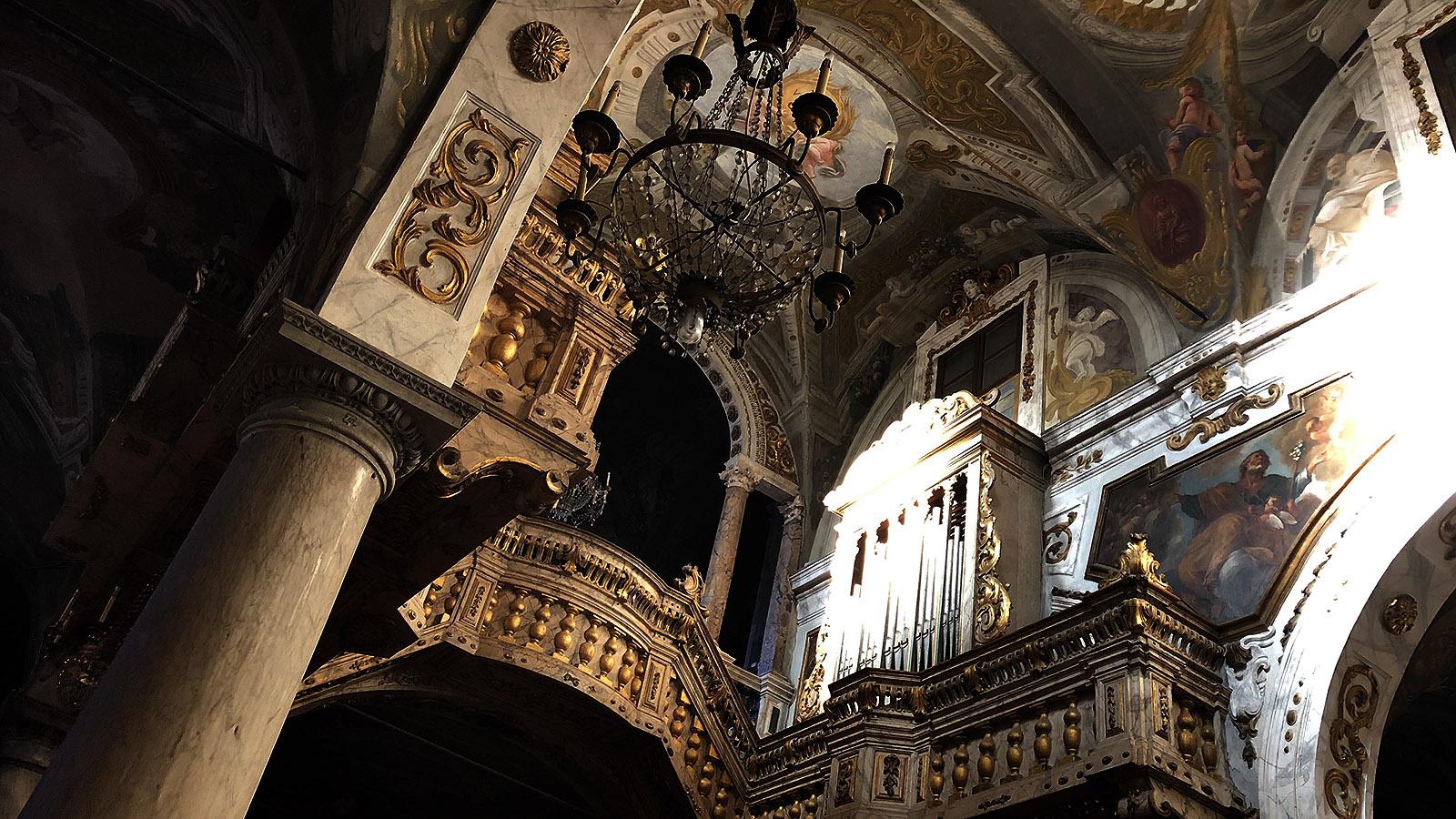One of the best examples of the Baroque of Lucca, the church of Santa Maria (St Mary) Corteorlandini actually has much older origins. The church is most likely part of a group of religious buildings built in the Lombard age.


CONTACTS
ADDRESS: Via Santa Maria Corteorlandini, 10 - Lucca
WEB:
TEL:
E-MAIL:
Archaeological excavations in 2017 uncovered a necropolis dated to the 6th century AD, which makes plausible the hypothesis of the presence of a sacred building of some significance, already in the early medieval period.
It is no coincidence that the name Corteorlandini stems from the original location of the church itself, which was located in the Curtis Rolandinga, namely in the court of the Rolandinghi family that resided here.
As an epigraph near the sacristy door reminds us, the church was completely rebuilt in 1188 by Master Guido: only the southern side and the two side apses of this construction are still visible after the 16th-century renovation. The brick bell tower dates back to the 14th century.
The church's history is closely linked to the Clerics Regular of the Mother of God. The congregation was founded in 1574 by Giovanni Leonardi of Diecimo, a priest trained in the Dominican convent of St. Romano and patron saint of pharmacists. In 1580 the congregation obtained its seat in Santa Maria Corteorlandini and in a few years became the city's most relevant cultural center.
The major role played by the Congregation in the Counter-Reformation period is evidenced by the magnificence of the interior of the church itself, a rare example of Baroque language in Lucca.
Capitals, arches, painted ceilings, vaults adorned with frescoes and stuccoe , 16th-century stoups, an octagonal pulpit clinging to a column, a splendid painted organ chancel with a balustrade of small columns, all contribute to the impression of wonder and theatricality typical of the Baroque style.
In 1662 the chapel of Our Lady of Loreto was built, containing an exact copy of the Holy House of the famous shrine in the Marche region. Because of this presence, for centuries the church has been popularly called: Santa Maria Nera (Saint Mary Black).
The convent was erected next to the church, now partly used as the State Library. The rearrangement was completed in the early 18th century with a complex decoration in frescoes and stucco work entrusted to Pietro Scorsini and Domenico Brugieri.
The church once also housed valuable works by artists of the caliber of Luca Giordano and Guido Reni: the former painted an Assumption that was destroyed in a fire at the beginning of the 20th century, while the latter is credited with two works, one now in the Uffizi, the other in the Villa Guinigi museum. There is also a rich representation of some celebrated local painters, from Francesco Vanni to Giovanni Marracci and to Gaspare Mannucci. The silver and lapis lazuli eucharistic tabernacle, attributed to the Flemish goldsmith Giovanni Vambrè the Elder, and the collection of altar frontals are also of fine workmanship.
